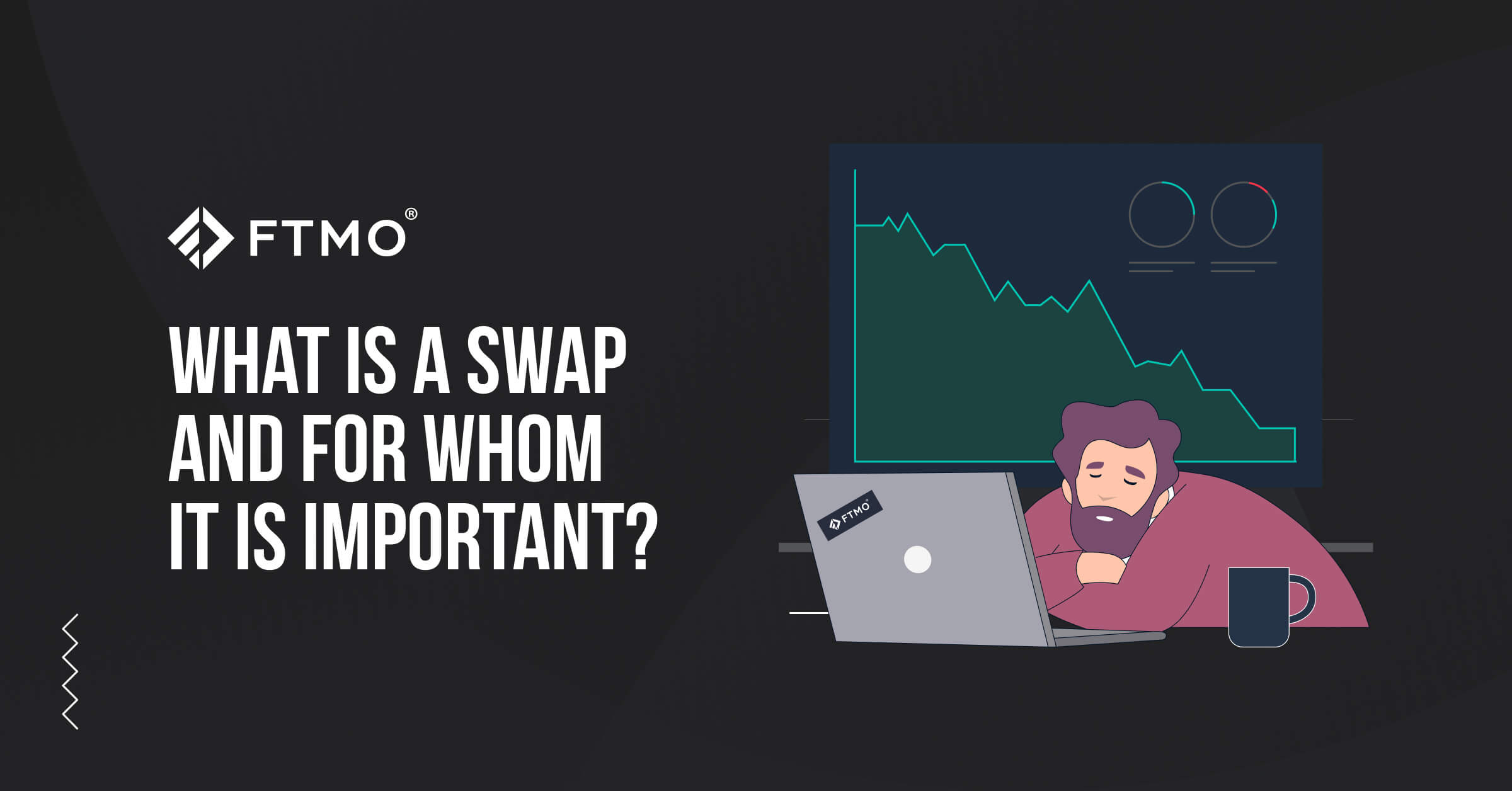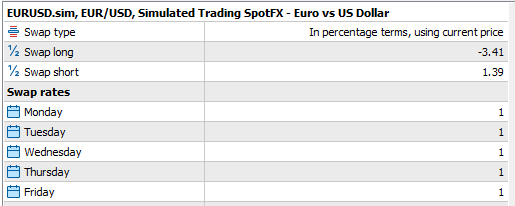
What Is a Swap and Who Is It Important For?
What is a swap in trading and why should some traders take it into account when opening their positions? Can a swap have any significant impact on the outcome of a trade? And what has FTMO prepared for swing traders? Let's check everything about swaps in this article.
When choosing a broker, traders often have to deal with the fees that the company charges them for executing the trade. Most often, they study the size of the spreads and commissions for the executed trades, and they should not forget about slippage.
Those who do not trade intraday should also know about swaps.
What Is a Swap and How Is It Calculated
A rollover forex swap, or FX swap, is a cost (or income) to traders for holding a position overnight.
For intraday traders who are not used to holding their positions overnight, the swap is not that important.
However, if the trade is drawn out and the trader does not manage to close it before midnight, he may be surprised by a slight decrease in profit (or increase in loss), or at best a slight unexpected profit.
The size of a swap is based on the interest rates of central banks of the countries whose currencies we trade.
The larger the difference in rates, the larger the swap.
A swap is usually positive when a long position is held in the currency with the higher interest rate, while it is usually negative when the trader is in a short position on the currency with the higher interest rate.
Thus, a swap differs for different currency pairs. Its size also depends on the broker (liquidity providers).
Nowadays, interest rates are often similar in most developed economies, resulting in swaps being negative in both directions.
The size of a swap in this case is influenced by the broker or liquidity provider itself.
- Simulated FX: swaps are charged daily, based on a percentage of notional value of the opened position
- Simulated Futures: No swaps
Carry Trade
In the days before the financial crisis, when most central banks in developed countries did not hold their interest rates near zero as they do today, traders and investment companies used higher positive swaps to make speculative investments to profit from interest rate differentials.
Thus, the USDJPY and GBPJPY currency pairs have been used quite extensively as the Bank of Japan used to keep its rates very low for a long time and rates in the U.S. and the U.K. have stayed above five percent.
Trades in which an investor borrows a currency at a low interest rate and buys a currency at a higher interest rate in order to profit from the interest rate differential are called carry trades.
For ordinary traders, such trades don't make much sense given the size of their accounts, but it's good to keep an eye on them. Carry trades can influence currency rates and create strong trends in the longer term when markets are stable. Higher yielding currencies then tend to appreciate at such times.
In times of crisis, on the other hand, currencies with higher interest rates, which are mostly currencies of emerging economies, fall despite the positive interest rate differential. Investors are looking for safe assets with lower interest rates and the carry trade principle is not working.
Swing Trading with FTMO
As already mentioned, swaps and carry trades are not a big problem for intraday traders, but traders who use swing strategies and hold a trade for several days or weeks have to take such scenarios into account.
In the best case, swaps will mean additional profit for them, in the worst case they have to count on lower profit or higher than expected loss.
All information provided on this site is intended solely for educational purposes related to trading on financial markets and does not serve in any way as a specific investment recommendation, business recommendation, investment opportunity analysis or similar general recommendation regarding the trading of investment instruments. FTMO only provides services of simulated trading and educational tools for traders. The information on this site is not directed at residents in any country or jurisdiction where such distribution or use would be contrary to local laws or regulations. FTMO companies do not act as a broker and do not accept any deposits.
About FTMO
FTMO has developed a two-step evaluation process to find trading talents. Upon successful completion, you may be eligible for an FTMO Rewards Account with a balance of up to $200,000 in simulated funds. How does it work?







